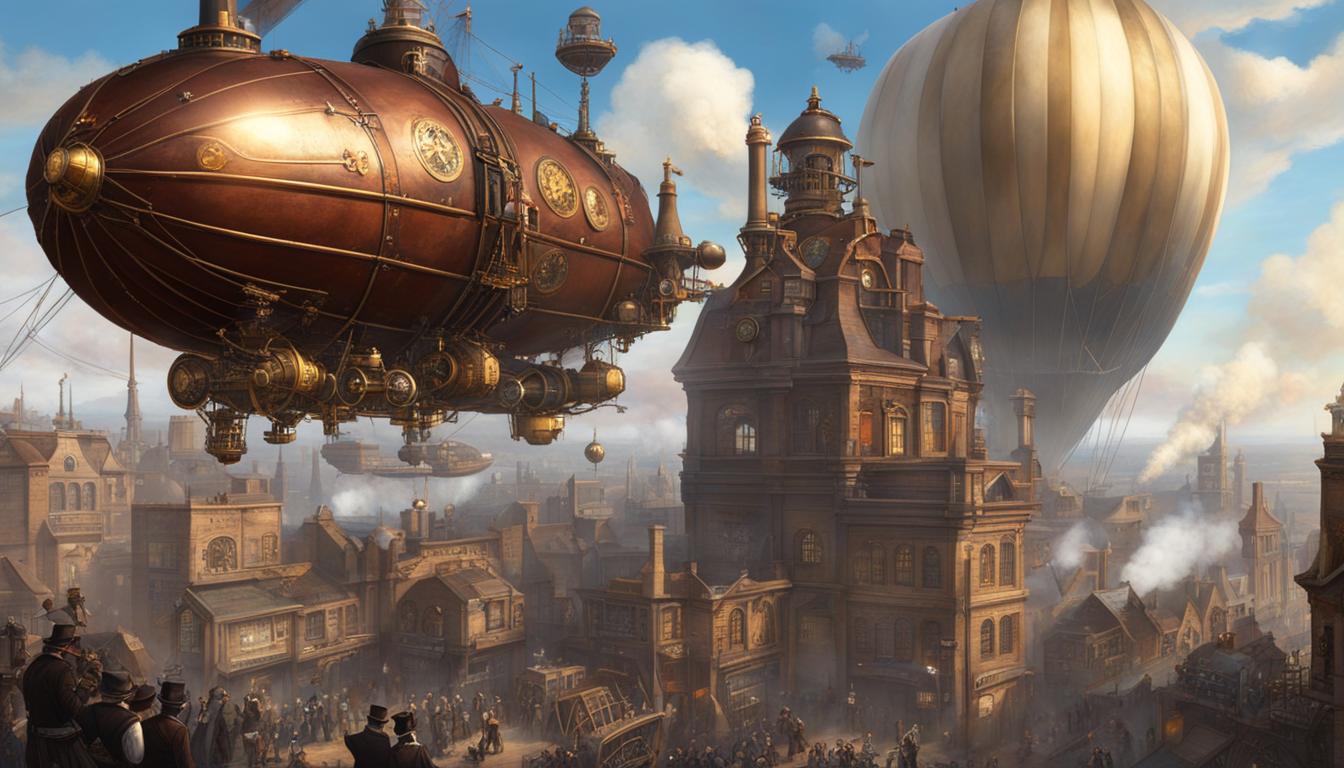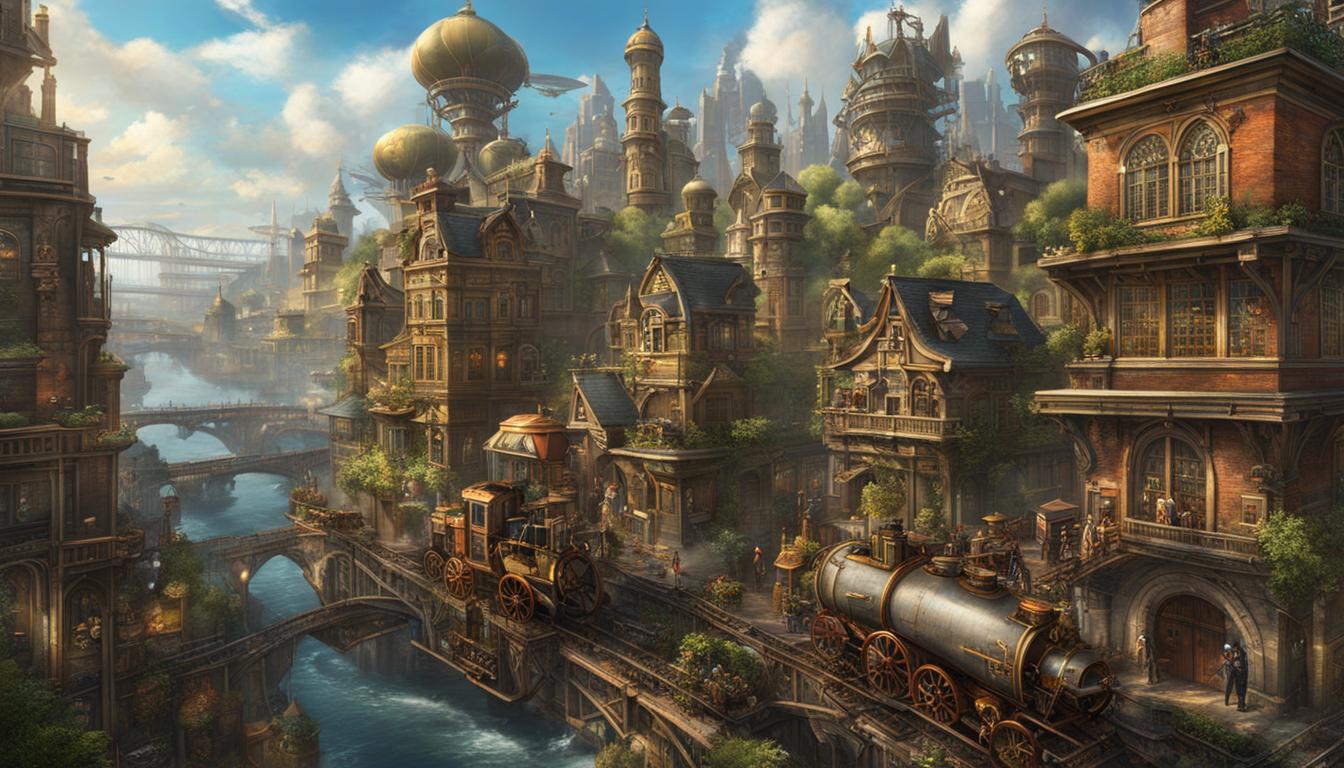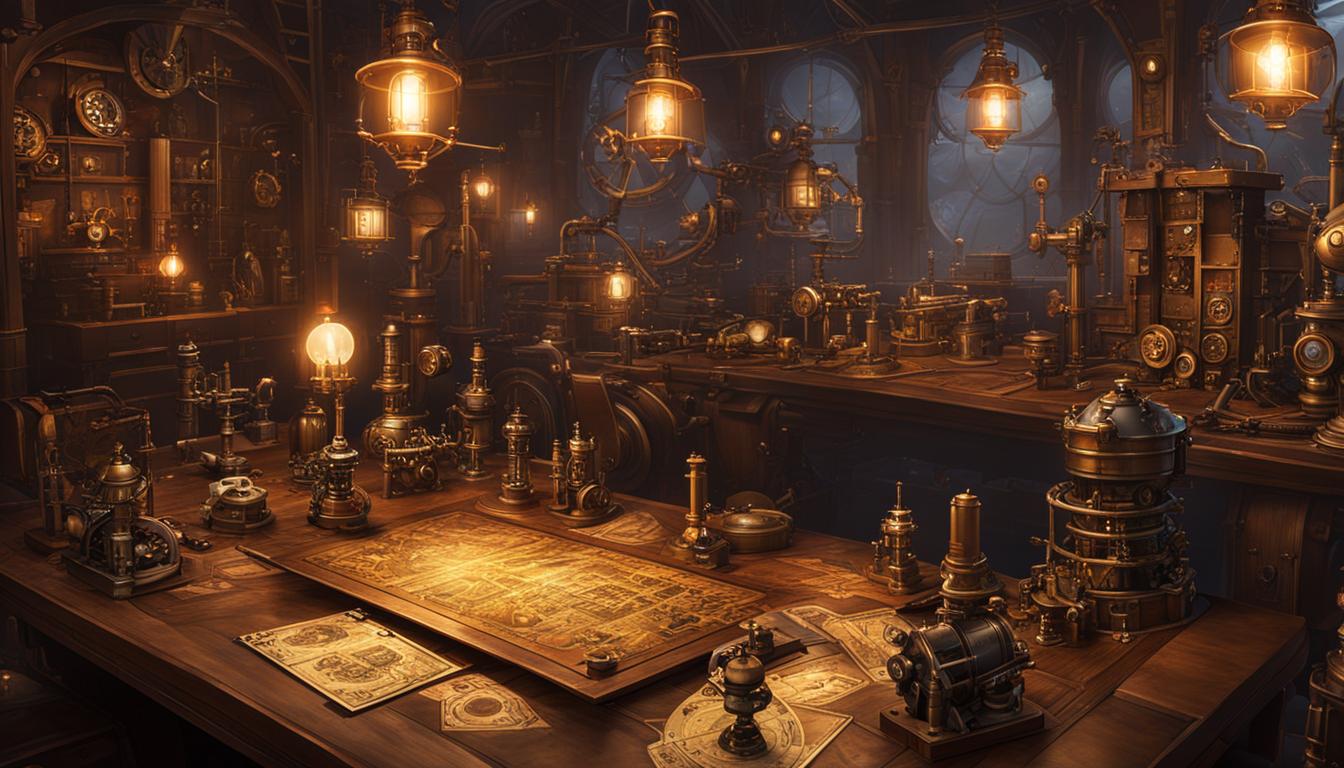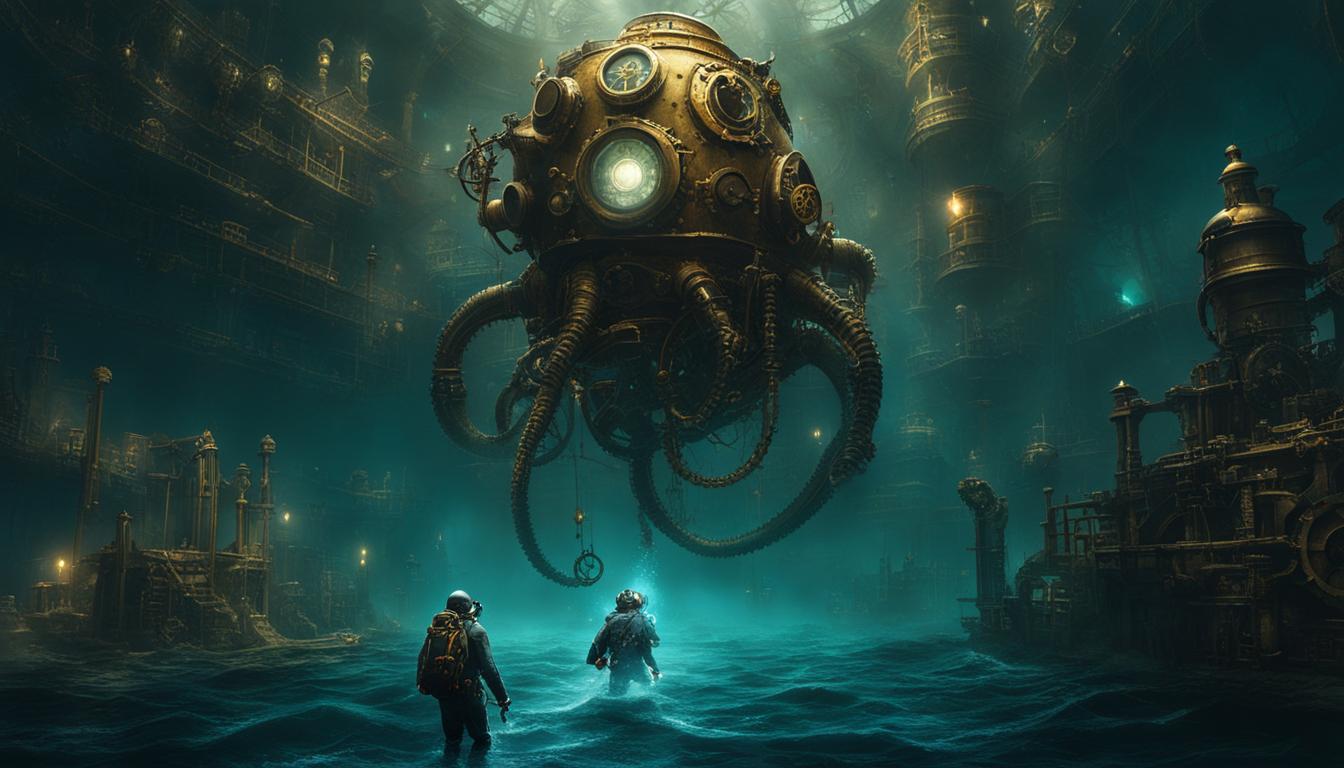Steampunk, a captivating subgenre of science fiction, transports us to a mesmerizing world that seamlessly merges retrofuturistic technology with historical themes. Drawing inspiration from the Victorian era and the American Wild West, this unique genre introduces us to a realm filled with steam-powered machinery, alternative histories, and anachronistic inventions.
Influenced by literary giants like Jules Verne and H.G. Wells, steampunk takes us on thrilling adventures through its vivid narratives, incorporating elements from other speculative fiction genres. Although the term “steampunk” was coined in 1987, its roots trace back to earlier works, with Japanese steampunk emerging as a popular subgenre within the movement since the 1940s.
Immerse yourself in the historical context of steampunk subgenres as we delve into their origins, influences, and the key figures who have shaped this remarkable movement.
Key Takeaways
- Steampunk blends retrofuturistic technology and historical themes, drawing inspiration from the Victorian era and the American Wild West.
- It incorporates steam-powered machinery, alternative histories, and anachronistic inventions.
- Literary pioneers like Jules Verne and H.G. Wells laid the foundation for steampunk.
- The term “steampunk” was coined in 1987, but it retroactively refers to earlier works.
- Japanese steampunk has been a prominent subgenre since the 1940s.
The Influence of the Victorian Era and Industrial Revolution
The historical roots of steampunk can be traced back to the Victorian era and the Industrial Revolution. This period, characterized by its unique blend of elegance and innovation, serves as a significant influence on the aesthetics and themes of steampunk.
Victorian aesthetics, with their ornate designs and meticulous attention to detail, provide the visual inspiration for steampunk. From corsets and top hats to intricate clockwork mechanisms, the Victorian era showcases a style that has captivated steampunk enthusiasts.
Furthermore, the Industrial Revolution, marked by the rise of steam-powered technology and factories, forms the foundation of steampunk’s retrofuturistic machinery. Steam engines, gears, and cogs are iconic elements of the steampunk genre, reflecting the technological advancements of the Industrial Revolution.
“Steampunk combines the elegance of the Victorian era with the ingenuity of the Industrial Revolution, creating a fantastical world where steam-powered technology reigns supreme.” – Steampunk aficionado
Steampunk’s fascination with the Victorian era and the Industrial Revolution goes beyond aesthetics and technology. The societal divisions of the Victorian era and rapid industrialization also influence the themes and narratives found within the genre. Steampunk often explores the consequences of unchecked progress and the contrasting perspectives of those in power and those affected by societal changes.
Table: Victorian Era vs. Industrial Revolution
| Victorian Era | Industrial Revolution |
|---|---|
| Ornate designs | Rise of factories |
| Cultural refinement | Technological advancements |
| Hierarchies and social divisions | Rapid urbanization and societal changes |
As steampunk continues to evolve and captivate audiences worldwide, its connection to the Victorian era and the Industrial Revolution remains a vital part of its identity. By embracing the aesthetics and technology of these historical periods, steampunk creates a unique and immersive world that celebrates the past while exploring alternative futures.
Key Figures in the Development of Steampunk
Steampunk, as a genre, has been shaped and influenced by various individuals across different forms of media. From literary pioneers to film influencers to music contributors, these key figures have played a significant role in the development and popularization of steampunk.
Notable Authors in Steampunk
Literary pioneers like Jules Verne, H.G. Wells, and William Gibson have laid the groundwork for steampunk through their imaginative works of science fiction and fantasy. Verne’s “20,000 Leagues Under the Sea” and Wells’ “The Time Machine” introduced readers to the possibilities of alternate histories and steam-powered technologies. Gibson’s novel “The Difference Engine” is often credited with sparking a renewed interest in steampunk in the 1980s.
Steampunk in Visual Media
Steampunk’s influence extends beyond literature, with film influencers playing a crucial role in its popularization. One notable example is the film “The League of Extraordinary Gentlemen,” directed by Stephen Norrington and based on the graphic novel by Alan Moore. The film’s blend of Victorian aesthetics and retrofuturistic technology introduced steampunk to a wider audience, showcasing its visual appeal on the big screen.
Music Contributors to the Steampunk Movement
In addition to literature and film, music has also made significant contributions to the steampunk movement. Bands like Abney Park and The Clockwork Quartet have incorporated steampunk themes into their music and performances, creating a unique fusion of styles. Their use of Victorian-inspired costumes, along with lyrics and melodies that evoke a sense of nostalgia for a bygone era, have further popularized steampunk’s aesthetic and concepts.
These key figures, among others, have played a vital role in shaping the steampunk movement and expanding its influence across different forms of media. Their contributions have helped solidify steampunk as a genre that continues to captivate audiences with its blend of history, technology, and imagination.
Conclusion
Steampunk has burst onto the mainstream scene, leaving its mark on fashion, pop culture, and art. Its fusion of historical aesthetics and steam-powered technology has captivated imaginations worldwide, propelling steampunk into the spotlight.
What sets steampunk apart is its vibrant DIY culture. Enthusiasts relish in the opportunity to create their own costumes, accessories, and awe-inspiring gadgets. This passionate community not only showcases their inventive spirits but also fosters a sense of camaraderie through conventions and online platforms.
Looking ahead, the future of steampunk holds endless possibilities. As technology continues to advance, the genre’s evolution and adaptation will be intriguing to witness. With its rich historical roots and wide-ranging influence, steampunk is poised to inspire future generations and etch a lasting impact on the cultural landscape.
FAQ
What is steampunk?
Steampunk is a subgenre of science fiction that blends retrofuturistic technology and aesthetics with historical themes.
Where does steampunk draw its inspiration from?
Steampunk takes inspiration from the Victorian era and the American Wild West, incorporating steam-powered machinery and alternative histories.
Who are some key figures in the development of steampunk?
Literary pioneers like Jules Verne, H.G. Wells, and William Gibson, as well as film influencers and music contributors, have played significant roles in shaping the steampunk movement.
How has steampunk influenced popular culture?
Steampunk has grown from a niche subculture to a mainstream movement, influencing fashion, pop culture, and art.
What is the future of steampunk?
As technology advances, it will be interesting to see how steampunk continues to evolve and adapt. With its rich historical roots and wide-reaching influence, steampunk is poised to inspire future generations and leave a lasting impact.





